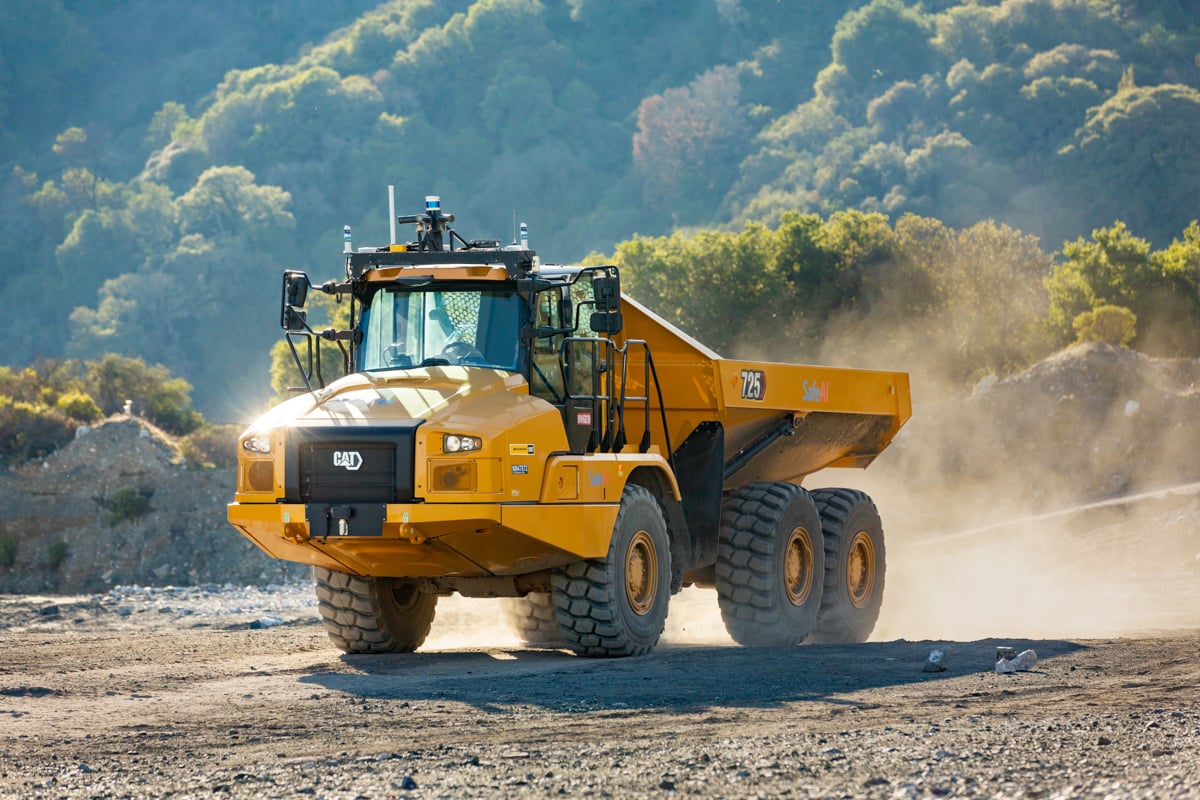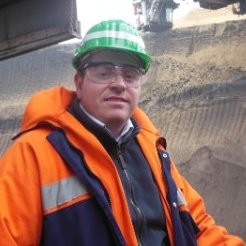
Q&A interview with Sudhanshu Singh on SafeAI’s ongoing successes, roadmap, and differentiators

Q: What have been your observations on joining SafeAI after a year?
A: I have always felt that technology should be something that is easy to deploy, easy to understand, and self intuitive. But also it should be reliable and cost effective, and that is something I get a lot of feedback from mine sites. During my career with Terex, Bucyrus and Caterpillar, I had the opportunity to work at both construction and mining sites globally. These construction, quarry and mining operations today are big potential markets for autonomy but they want simplicity not complexity. To deploy autonomy comes with a lot of extras in terms of network requirement, training requirement, change management and fleet management. All this needs to be brought together and innovated in a creative way to make the process as easy as possible for the customer.
When MACA was evaluating various autonomy options, they looked at all of the different players. One of their criteria was that things should be very simple and that issues should be easy to diagnose. It should also be very fast to deploy – the mining contractor business model is pretty detailed and very time sensitive. With typically 3-5 year contracts, though these are often renewed – you don’t have the luxury of a long payback period that owner operators have. MACA wanted an autonomy tech provider that was able and willing to do things differently. We have a very well laid out plan with defined milestones.
Things are progressing very well since the initial deployment on a 181 t class Hitachi EH3500AC-3 haul truck at Capricorn Metals’ Karlawinda. The agreement covered retrofitting a mixed fleet of 100 mining trucks across multiple locations together with Position Partners. Since the MoU was announced in March 2022, MACA was acquired by Thiess and Position Partners was acquired by Mitsui – suffice to say that this has significantly enlarged the potential scope of the project. This was all very well suited to one of the missions of SafeAI – which was to accelerate autonomy in mining not only in the big Tier 1 mining assets, but also in the small mines and construction sites which may only have a small number of machines.
SafeAI has already blown away previous concepts of how fast things could be done using its in-house creativity and innovation. To give you an example, the SafeAI Head of Engineering used to work for both Boeing and Northrop Grumman on autonomous solutions including aerial autonomous vehicles. We also have an ex-NASA employee who was involved with the Mars Rover. We have several folks with proven experience from TESLA, BHP, Rio Tinto, Caterpillar, Komatsu and Hitachi helping us develop solutions at a much faster pace.
These types of talented people are at SafeAI because they are behind the mission, not just the job. SafeAI also has the luxury of having a large quarry-based proving ground near our HQ in San Jose, California. To summarise, SafeAI has a very creative, innovative and customer partnership based approach. The two customer partnerships we have with MACA and Obayashi are completely aligned with this.
Q: Everyone is using similar LiDAR, radar and camera-based sensors – but with different command and control systems, computing power and AHS algorithms – what are SafeAI’s technology differentiators?
A: SafeAI is leveraging billions of investment dollars that took place in the auto industry to deploy autonomous vehicle technology for construction and mining. The evolution of a neural network that took place in SafeAI’s system development was a major breakthrough.
AI has made our machines smarter – but that would not have been possible with the hardware that was available a decade ago. We freely admit that we are building on a lot of the work done by the major OEMs on AHS – standing on the shoulder of giants if you like – but these systems have embedded limitations which can now be resolved with the hardware, AI and computing power – all of which have seen a step change in the last five years. A good comparison is with mobile phones – you would not have the functionality of today’s phones on things like Uber or WhatsApp without Android or IOS.
You are right the sensors are similar – but beyond that, SafeAI has its own operating system for autonomy, and our own end to end software stack. At heart, we are a software company. Our AI is an advantage because the computing power on our truck is on another level to anything else in the industry.
We are also the only autonomous system provider in mining with a base system that is agnostic to the brand of machine and whether it is an ADT, rigid truck or dozer. Our software stack is a bolton to any machine with minor adjustments to the drive by wire. It sounds simple but is very difficult to replicate. We like to refer to it as Autonomy 2.0 - machine, hardware and OEM agnostic and AI-based. You can also plug in different sensors to the SafeAI system and it will keep running – LiDAR is evolving on an exponential scale in its abilities and the way our software stack is set up, you can work with new sensors very easily – pretty close to plug and play.
Q: Will the AHS market evolve as a twin track with Cat Command for hauling and Komatsu FrontRunner on one side with the big mines that have committed to those systems on one side, and more nimble AI-based options and customers on the other? What role does electrification play?
A: I think yes, you will have both – but the influence of third party players like ourselves will only increase. The auto industry is investing $8 to 10 billion a year in electrification with autonomy – nobody in mining and construction can afford that so naturally, the ecosystem that results from what is happening in automotive will be mirrored in mining. The big OEMs can and will change but it will be a challenge for them and they will have to quickly accept that they cannot lock mining customers into their version of autonomy.
We recently published a whitepaper titled ‘Better together: Autonomy and Electrification in Heavy Industry.’ Industry’s electrification transition in tandem with the huge installed base of existing machines represents a level playing field for OEMs and new players in autonomy and zero emissions solutions. In that report, Shinya Sugiura, GM of Business Innovation Division at Obayashi states: “Autonomy and electrification are the next frontier, but equipment upgrades often come with a steep price tag. Retrofitting enables operators to integrate these state-of-the-art offerings at a fraction of their original cost. By eliminating the logistical and financial hurdles of acquiring new vehicles, while also empowering operators to convert existing equipment, retrofitting offers a more pragmatic and scalable approach to technology adoption.”
Heavy equipment is expensive: one conventional 25-ton truck typically costs $400,000 or more—and a new autonomous 200-ton haul truck can be worth up to $6 million. The purchase of new autonomous and electric vehicles only makes sense if a company needs to replace its expired equipment or has the capital to set up an entirely new fleet. By retrofitting vehicles, businesses can arm their existing fleet with state-of-the-art technology at a relatively lower investment and faster speed to market.
 SafeAI is collaborating with Siemens to create an autonomous, zero-emission heavy vehicle fleet for Obayashi Corp and is starting by retrofitting a 45 ton Cat 725 ADT, to battery electric.
SafeAI is collaborating with Siemens to create an autonomous, zero-emission heavy vehicle fleet for Obayashi Corp and is starting by retrofitting a 45 ton Cat 725 ADT, to battery electric.
Q: What progress have you made in the electric and autonomous market so far?
A: In 2022, SafeAI announced a collaboration with Siemens to create an autonomous, zero-emission heavy vehicle fleet for Obayashi Corporation and retrofitted the first 45 ton vehicle, a Cat 725 ADT, to battery electric – which is being followed by scaling across its fleet over a three-year period. They have a similar story to MACA in that they couldn’t get an OEM to commit to the vision and path that they had.
OEMs are very organised but also very structured, which makes it hard for them to innovate in a very agile way. From integrating automatic charging capabilities, to monitoring vehicle productivity metrics using an analytics suite, to building an accessible deployment platform for operators, regulators and tech developers alike, SafeAI is making tangible progress in merging self-driving capabilities with an all-electric powertrain.
Bibhrajit Halder, Founder and CEO at SafeAI: “Without autonomy, electrified vehicles don’t have the same safety, productivity, and outsized cost savings potential. Without electrification, autonomous vehicles don’t have the same sustainability and energy optimisation advantages. Each of these operational benefits build on one another to establish the best possible working conditions for construction and mining equipment—a feat otherwise impossible for the two technologies to achieve on their own.”
The combined technologies also enable the use of smaller trucks on worksites. Retrofitting smaller equipment, 75-145 tons, to convert it to both electric and autonomous unlocks significant value from unused and sterilised assets. It can increase asset utilisation, extend asset life, reduce depreciation and maintenance costs, increase data extraction and improve the resale value.
Q: What is SafeAI’s answer to fleet management and autonomy?
A: On small mines and construction sites, they may only have four or five machines. They also can’t afford a massive and complex dispatch system. It has to be simple plus fast and easy to deploy, such as via an iPad. SafeAI’s Autonomous Management System is designed to automate entire fleets, streamline workflows and power 24/7 operations. Utilising both cloud-based and on-premise technology, ZENO™ allows operators to monitor and manage entire fleets of both autonomous and manned vehicles. Site planning, vehicle insights, fleet dispatching, real-time progress monitoring and job completion tracking are all at your fingertips — making autonomous management and execution far easier. And this is equally applicable at a big mine using a complex dispatch system for its main fleet – we will just bolt our solution allowing them to automate infrastructure fleets, light vehicles, contractor fleets – anything that isn’t covered by the existing system. For new mines where we also have the main fleet – we can use ZENO™ for everything.
